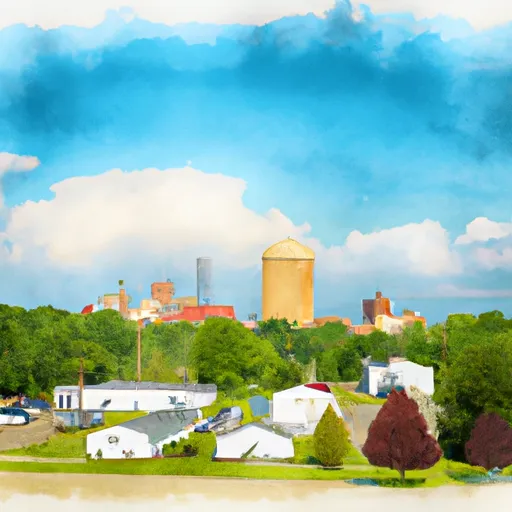°F
°F
mph
Windspeed
%
Humidity











Van Buren, Ohio is a small and charming village located in Hancock County. The climate in Van Buren is typically characterized by warm summers and cold winters. Summers are mild to hot with temperatures ranging from the mid-70s to mid-80s Fahrenheit, while winters can be cold with temperatures dipping into the low 20s. Precipitation is evenly distributed throughout the year, with an average of around 35 inches annually.
Hydrologically, Van Buren is situated near the Blanchard River, which provides a picturesque setting for outdoor activities. Fishing enthusiasts can enjoy casting their lines for various species, including bass, catfish, and sunfish. The river is also perfect for kayaking and canoeing, offering peaceful and scenic routes.
For those seeking outdoor recreation, Van Buren boasts several parks and natural areas. The Van Buren State Park offers opportunities for hiking, picnicking, and camping. Additionally, the nearby Van Buren Trail State Park provides a scenic trail for walking, biking, and jogging. Nature lovers can explore the diverse flora and fauna found in these parks, making Van Buren an ideal destination for outdoor enthusiasts.
Weather Forecast
Van-Buren receives approximately 912mm of rain per year, with humidity levels near 83% and air temperatures averaging around 10°C. Van-Buren has a plant hardyness factor of 6, meaning plants and agriculture in this region thrive during a short period during spring and early summer. Most plants will die off during the colder winter months.
Nearby Snowpack Depths
2
Inches
Regional Streamflow Levels
56
Cubic Feet Per Second
1,050
Cubic Feet Per Second
66
Cubic Feet Per Second
133
Cubic Feet Per Second
Nearby Camping
| Camping Area | Reservations | Toilets | Showers |
|---|---|---|---|
| Appleton Lake - Brighton Rec Area | |||
| Highland State Rec Area | |||
| Pontiac Lake State Rec Area | |||
| Camp Dearborn | |||
| Holly State Rec Area | |||
| Proud Lake State Rec Area |



